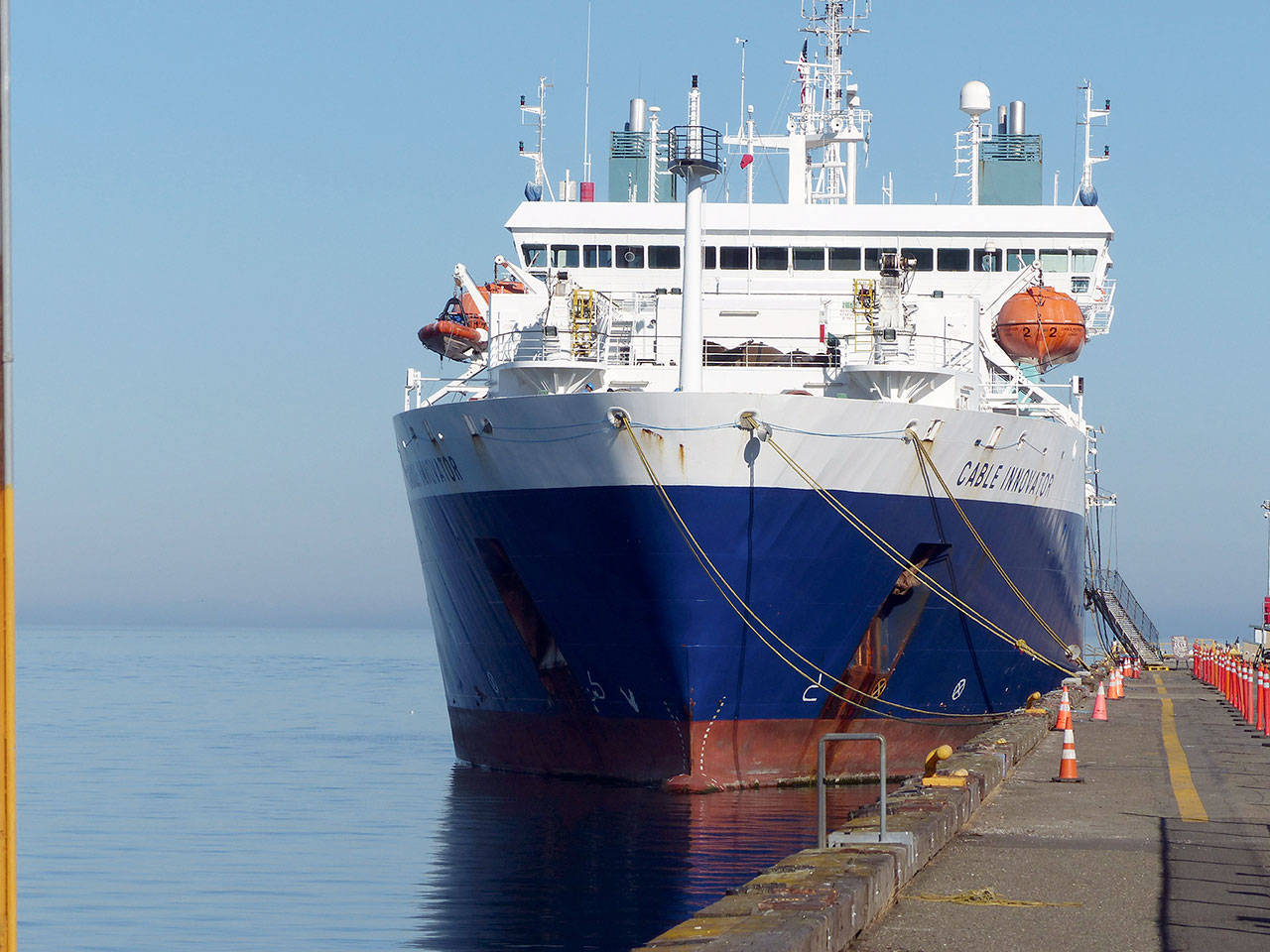PORT ANGELES — It’s something like plucking a needle from a haystack.
The Cable Innovator, a 476-foot vessel that left Saturday after it had been moored to the Port of Port Angeles’ Terminal One since Sept. 21, has the capability of reaching more than 6,000 feet down into the sea and retrieving a cable no bigger than six pencils taped together.
Late Wednesday afternoon, my wife, Mardi, and I boarded the ship, which was built in 1995 by Kvaerner Masa-Yards in Helsinki, Finland, along with a large contingent from Port Angeles.
We were there for a tour of the world’s first purpose-built stern-working cable-laying vessel.
Others joining us included Port Angeles City Councilman Dan Gase; County Commissioners Randy Johnson and Bill Peach; Mike Nimmo and Dan Shea, who keep the terminals running smoothly; Port of Port Angeles Executive Director Karen Goschen; Kevin Hoult, an adviser with the Small Business Development Center; and Port of Port Angeles Commissioners Steve Burke and Connie Beauvais.
We assembled in the bar area where Capt. Paul Hajnes welcomed us aboard his ship — which flies a United Kingdom flag and is manned by a predominately British crew — and invited us to partake of light tea, which was waiting for us.
In his opening remarks, the captain said the first five years Cable Innovator was in service were boom years for the laying of fiber-optic cable, but now the bread and butter of the business is in cable maintenance.
The vessel, which is owned by Global Marine Systems, is now a station ship at Global Marine Systems North Pacific base at Victoria with a contract to make repairs as necessary to the numerous cables that crisscross the Pacific Ocean.
It shares space with cruise ships and has to go out to anchorage when cruise ships fill the berths at Ogden Point
While here, the cable ship refueled.
Tours were given of the bridge and down below in the space where the retrieval and repair of the cable takes place.
The area where the cable is repaired is fascinating.
Four tanks in the ship hold miles of fiber-optic cable. The ship is ready for any contingency when it goes out to make a repair, which by contract can be made to a depth of 6,562 feet.
The cable can be brought to the surface by a remotely operated submersible vehicle or by a grapple system from the stern of the ship. For a video on the process of cable retrieval and repair, see www.globalmarine.co.uk/maintenance.html.
Global Marine, based in England, provides sub-sea cable maintenance services to almost 100 customers around the globe to keep their fiber-optic cable systems operational.
As to how cables languidly lying on the bottom of the ocean become damaged, we were told there are many ways.
They can be damaged by seismic activity and tsunamis; in shallow water as in the Philippines, fisherman dragging their gear across cable is often a culprit, as are ships dropping their anchors.
The captain said he was impressed with the services the Port of Port Angeles made available to his vessel.
The most impressive, he said, was the shore power.
Initially he was skeptical. He said he expected to see the lights in the city dim once the ship was connected. He was pleased to see that once the ship had power, the lights in the city remained on as well.
At the conclusion of the tours, we congregated in the bar area known as the Mucky Duck and enjoyed a couple of libations and delicious canapés before dining in the ship’s dining room with the captain and his crew.
A toast of port wine honoring the queen of England and the president of the United States concluded our dinner.
________
David Sellars has been on hiatus from his column, On the Waterfront, in the Peninsula Daily News.

